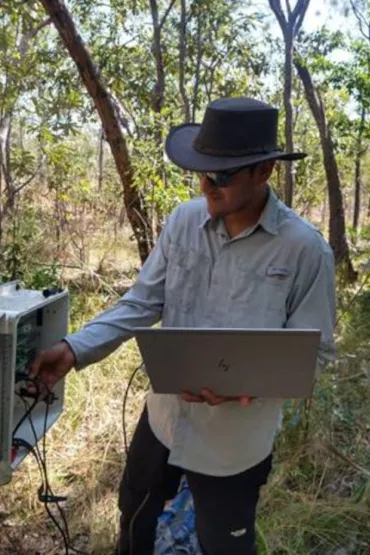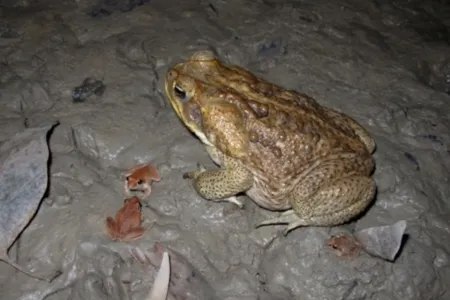RIEL seminar series
Two short talks: cane toads and carbon fluxes
| Presenter | Dr Francesco Ulloa Cedamanos and Prof Keith Christian | |
|---|---|---|
| Date/Time |
to
|
|
| Contact person | E: RIEL.outreach@cdu.edu.au | |
| Location | Yellow 1.1.39 and online | |
| Open to | Public | |
Linking terrestrial–aquatic carbon fluxes to rectify the Australian carbon balance, presented by Dr Francesco Ulloa Cedamanos
Despite limited concurrent measurements, the lack of integrated observations leads to overestimation of carbon storage capacity in Australian ecosystems. To improve accuracy, comprehensive approaches encompassing both terrestrial and aquatic ecosystems are crucial. Our understanding of carbon transport in streams and rivers is limited to periodic sampling, disregarding flow events and seasonal fluctuations. By implementing high-frequency sensors and conducting sampling campaigns near flux towers, we can integrate carbon fluxes and track its fate across ecosystems. In this context, the ARC Discovery Project (DP) aims to develop the first assessment of terrestrial carbon export to streams and rivers across Australia. The project will integrate direct measurements from ecosystem observatories of the Terrestrial Ecosystem Research Network (TERN) with remote sensing and advanced statistical modelling techniques.
In this seminar, Francesco Ulloa, a post-doctoral researcher at RIEL specialising in freshwater biogeochemistry, will present the strategies that have been adopted to integrate terrestrial and aquatic carbon flux measurements across diverse biomes of Australia by leveraging TERN ecosystem observatories. The seminar will provide insights into the approaches employed in advancing our understanding of carbon dynamics in Australian ecosystems.
Evaporative water loss in cane toads of the world, presented by Prof Keith Christian
Like other “typical” frogs, toads have very high rates of water loss – similar to a free surface of water with the size and shape of a toad. However, a recent publication reported significant resistance to evaporative water loss in cane toads from some populations, but not others. This raised the question – Is this the first instance of the evolution of resistance to water loss in any toad in the world – or is there some other physiological process related to these measurements? In May, we travelled to Queensland to measure toads from different locations, and now we know the answer to that question.
Related Events

Tai Chi Kung Fu Fan
Join our Tai Chi Kung Fu Fan classes to learn a unique style of Tai Chi combined with other martial arts and dance movements! The classes run every Monday at 5.30 pm, from 26 January - 30 March.
Read more about Tai Chi Kung Fu Fan
Chinese kung fu classes for kids
Join our kung fu classes specialised for children. It’s more than just exercise—it’s a journey to a healthier, brighter, and more focused future for every child! The classes run every Monday at 5.30 pm, from 26 January - 30 March.
Read more about Chinese kung fu classes for kids
Chinese calligraphy for beginners
The CDU Confucius Institute is now offering Chinese calligraphy for beginners, a new course on the CDU Casuarina campus. The workshops will run every Tuesday, from 5 pm - 6 pm, starting 27 January to 31 March.
Read more about Chinese calligraphy for beginners

